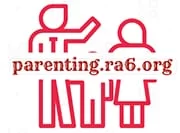Exploring the Montessori Environment: Nurturing a Child’s Growth, Independence, and Passion for Learning
The Montessori environment is a uniquely designed space that encourages children to engage in learning through exploration and interaction with their surroundings. This environment is meticulously crafted to meet the educational and developmental needs of children, following the principles set forth by Dr. Maria Montessori over a century ago.
In this article, we’ll delve into the intricacies of the Montessori environment and explain how it fosters a child’s growth, independence, and love of learning.

Table of Contents
What is a Montessori Prepared Environment?
![]()
The Montessori prepared environment is a thoughtfully designed space that supports a child’s natural desire to learn. It is characterized by order, simplicity, and beauty, which provide a peaceful and structured atmosphere for children. In a Montessori environment, everything has a purpose and is accessible to the child. This setup encourages them to take initiative, make choices, and engage with the materials they are drawn to, promoting self-directed learning.
- Order: The environment is organized in a way that everything has a place and is arranged logically, helping children make sense of their world.
- Beauty: Aesthetically pleasing elements, such as natural materials, artwork, and plants, are incorporated to create a warm and inviting space.
- Accessibility: Furniture and materials are child-sized, allowing children to move freely and independently within the space.
- Freedom: Children are given the freedom to choose their activities and work at their own pace, fostering autonomy and self-discipline.
The Elements of a Montessori Classroom Environment
![]()
The Montessori classroom environment is divided into several key areas, each designed to focus on a specific developmental stage or learning area. These include:
- Practical Life: This area contains activities that help children develop fine motor skills and teach them about caring for themselves, others, and the environment.
- Sensorial: Materials in this section are designed to refine the senses and help children understand and classify their sensory experiences.
- Mathematics: Through hands-on materials, children learn about numbers, counting, and more complex mathematical concepts.
- Language: The language area promotes literacy skills with materials that support vocabulary development, writing, and reading.
- Cultural: This section includes geography, science, and cultural studies, helping children learn about the world and people around them.
Each area is interrelated, allowing children to make connections across different subjects and aspects of learning.
Implementing a Montessori Environment at Home
![]()
Creating a Montessori environment at home can be a rewarding way to support your child’s development. To do this, consider the following tips:
- Simplify: Keep the space uncluttered and organized, making it easier for your child to focus and make choices.
- Child-size furniture: Use furniture that fits your child’s size, allowing them to access things independently.
- Accessible materials: Place toys and learning materials on low shelves within your child’s reach, encouraging exploration and independence.
- Real-life activities: Incorporate real-life tasks, such as cooking or gardening, to help your child develop practical life skills.
- Respect for the child: Give your child the freedom to choose their activities and respect their learning process, stepping back to allow them to explore and learn at their own pace.
By adapting the principles of the Montessori prepared environment to your home, you can create a supportive space for your child’s learning and growth.
Benefits of a Prepared Environment in Montessori
![]()
The prepared environment in Montessori education offers numerous benefits for children, including:
- Independence: With materials and furniture suited to their size, children can operate in the space without adult assistance, fostering independence.
- Confidence: As children successfully navigate their environment and activities, their confidence and self-esteem grow.
- Concentration: The structured environment minimizes distractions, allowing children to focus deeply on their tasks.
- Love of learning: The freedom to choose and engage with activities that interest them nurtures a child’s natural curiosity and love of learning.
- Social skills: The environment encourages cooperation and respect among children as they interact and learn from one another.
These benefits contribute to a well-rounded development, setting the foundation for a lifelong journey of learning and self-discovery.
Montessori Outdoor Environment
![]()
The Montessori outdoor environment is just as important as the indoor classroom. It serves as an extension of the learning space, providing opportunities for children to connect with nature, engage in physical activity, and learn about the world around them. The outdoor environment includes:
- Natural elements: Plants, gardens, and natural landscapes allow children to observe and interact with the natural world.
- Practical life activities: Outdoor tasks like gardening, raking leaves, or washing outdoor furniture provide real-life experiences.
- Sensorial experiences: The outdoors offers a rich array of sensory experiences, from the texture of leaves to the sounds of birds.
- Physical development: Outdoor play structures and open spaces encourage gross motor skill development and physical activity.
By integrating an outdoor component, a Montessori environment supports a child’s holistic development and fosters a connection to the natural world.
Conclusion
![]()
The Montessori environment, whether in a classroom or at home, is crafted to nurture a child’s natural inclination towards learning. Through the prepared environment, children are encouraged to explore, discover, and grow in a space that respects their individuality and promotes independence. The thoughtful arrangement of materials, child-sized furniture, and the emphasis on natural beauty and order all contribute to an atmosphere where children can thrive academically, socially, and emotionally.
By understanding and embracing the principles of the Montessori prepared environment, educators and parents can create spaces that not only support a child’s current developmental stage but also lay the groundwork for a lifelong love of learning and exploration. Whether through the careful design of indoor classroom spaces or the integration of outdoor learning opportunities, the Montessori environment remains a powerful tool in the education and development of children around the world.
Originally posted 2023-01-31 18:28:36.
